Blog
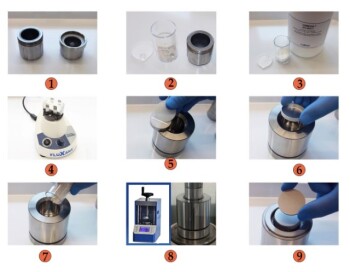
A Comprehensive Guide on Pressing XRF Pellets Using a KinTek Automatic Hydraulic Press
1 year agoXRF (X-ray fluorescence) analysis is a powerful technique used in various industries for material analysis. One crucial step in the XRF analysis process is the preparation of high-quality XRF pellets. These pellets serve as the sample for analysis and need to be properly pressed to ensure accurate results.
Learn More
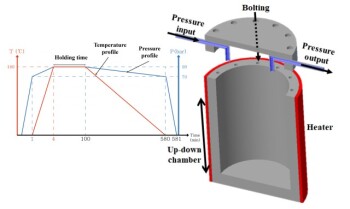
How to Achieve Uniform Pressure with Warm Isostatic Press
1 year agoWarm Isostatic Pressing (WIP) is a manufacturing process that subjects materials to high pressure and high temperature simultaneously. The process involves using an isostatic press to apply uniform pressure to the material from all directions while it is heated to a specific temperature.
Learn More
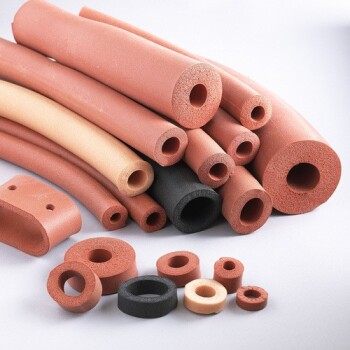
Silicone Sponge: An Essential Component for Heat Press Machines
1 year agoOne essential component of a heat press machine is the silicone sponge. This sponge is used to distribute pressure evenly across the surface of the fabric, ensuring that the design is transferred smoothly and evenly. When a heat press machine applies pressure to the fabric, the silicone sponge helps to distribute that pressure evenly across the entire surface of the fabric. This ensures that the design is transferred smoothly and evenly, without any wrinkles or creases.
Learn More
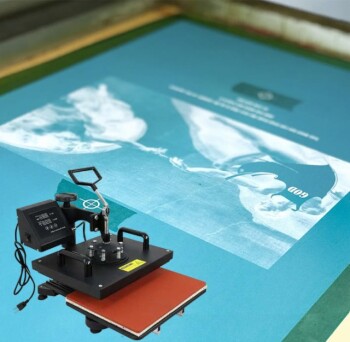
Comprehensive Guide to Heat Press Machine and Essential Supplies
1 year agoMany people are familiar with using iron-on logos or graphics to customize apparel and other products. While iron-ons can be effective, using a heat press offers more consistent heat and pressure, resulting in higher-quality results. Heat presses also allow you to use transfer products that require higher temperatures and pressures than what can be achieved with an iron.
Learn More
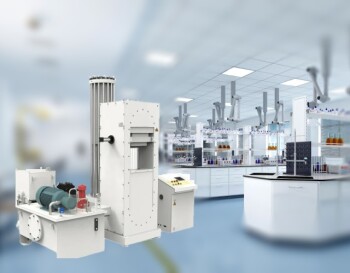
How to Choose the Right Lab Press
1 year agoLab presses are used in a variety of applications, including material research, sample preparation, and quality control. The importance of a lab press lies in its ability to provide accurate and consistent pressure and force, which is crucial in obtaining reliable results. Choosing the right lab press is essential to ensure that your laboratory work is efficient and accurate.
Learn More
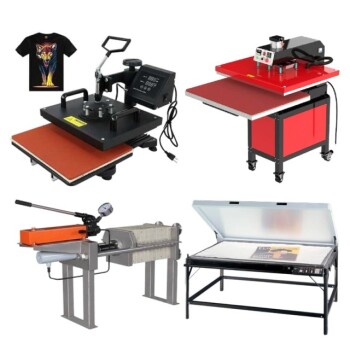
Comprehensive Guide to Heat Press Machines
1 year agoA heat press is a machine designed to imprint a design or graphic on a substrate, such as a t-shirt, using heat and pressure for a specific duration. It is not limited to fabric applications; specialized heat presses can also imprint designs on mugs, plates, jigsaw puzzles, caps, and other products. Essentially, a heat press heats and presses materials, making it a valuable and versatile tool for any printing business.
Learn More
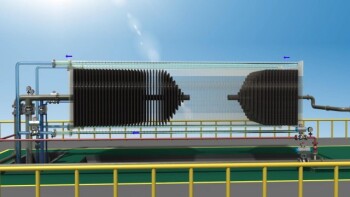
Comprehensive Guide to Filter Press Pilot Testing
1 year agoFilter press pilot testing serves the purpose of collecting data necessary for accurately sizing a full-scale filter press system. This data includes various parameters such as cake solids, cake density, total processing time, processing time for each step, slurry feed solids, slurry pH, chemical conditioning dosages, and maximum operating pressure for each process step. Additionally, other data like filtrate suspended solids, slurry pH, and specific chemical analysis required by the process may also be collected.
Learn More

Comprehensive Analysis of the Laboratory Press and Its Key Features
1 year agoIn the world of laboratory research and testing, having a reliable and efficient laboratory press is crucial. Whether you're working with materials testing, sample preparation, or quality control, a laboratory press can greatly enhance your workflow.
Learn More
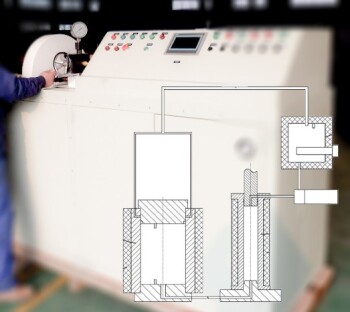
How to Ensure Molding Quality and Efficiency with Warm Isostatic Press
1 year agoWarm Isostatic Press (WIP) is a type of isostatic press that uses a combination of heat and pressure to create high-quality parts. The WIP process involves placing a part inside a flexible mold, which is then filled with a gas or liquid media.
Learn More
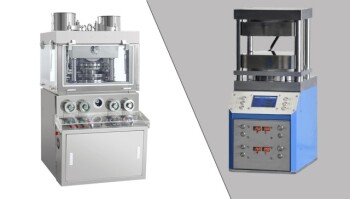
Detailed Analysis of Tablet Presses: Their Types, Components, and Applications
1 year agoTablet presses are machines designed to compress pharmaceutical powders and granules into tablets. They play a crucial role in the pharmaceutical industry by ensuring the uniformity of each dosage unit, which is essential for patient safety. The precision capabilities offered by modern tablet presses are invaluable for pharmaceutical companies, as they help create tablets that contain the same amount of active pharmaceutical ingredients and excipients.
Learn More

How to Use a Rotary Evaporator for Concentrating Samples
1 year agoRotary evaporators, also known as rotovaps, are laboratory devices used to remove solvents from liquid mixtures through evaporation.
Learn More
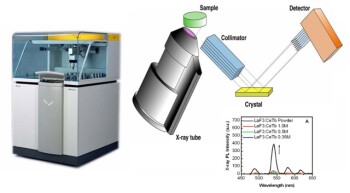
Techniques for Sample Preparation in X-Ray Fluorescence Analysis: Pressed and Loose Powder Methods
1 year agoX-ray fluorescence (XRF) analysis is a common technique used for analyzing powders in various industries. When it comes to preparing powder samples for XRF analysis, there are two main methods: pressed powder method and loose powder method.The pressed powder method involves compressing the sample into a pellet or disk, while the loose powder method involves simply placing the sample into a cup or container. Each method has its advantages and disadvantages, and the choice of method depends on the specific requirements of the analysis.
Learn More

Enhancing Safety in Your Laboratory: A Comprehensive Guide to Pressure Reactor Safety
1 year agoLaboratory safety isn't just about you. Improper preparation and mishandling can cause potential hazards that could be disastrous if left unchecked. It is crucial to take the time to carefully prepare your pressure reactor and lab safety equipment, as even minor problems can escalate quickly when working under pressure.
Learn More

How to Use FTIR Pellet Press to Prepare Samples for Analysis
2 years agoFourier Transform Infrared (FTIR) spectroscopy is a powerful analytical technique used to identify and quantify chemical compounds in a wide range of samples. FTIR analysis requires the sample to be in the form of a pellet, which is prepared by compressing the sample with a suitable matrix material.
Learn More
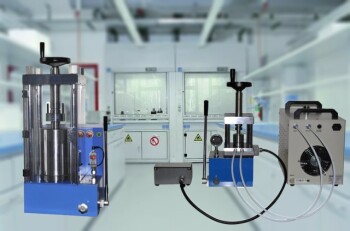
Hydraulic Presses vs. Mechanical Presses Which is Right for Your Laboratory
2 years agoHydraulic and mechanical presses are two commonly used types of presses, each with its own set of advantages and disadvantages. Hydraulic presses use hydraulic cylinders to apply force, while mechanical presses use a mechanical lever or cam to apply force.
Learn More
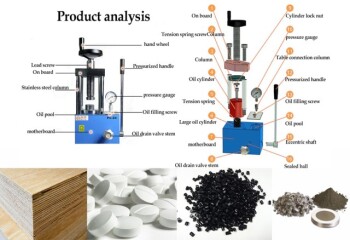
Understanding the Importance and Applications of Laboratory Presses
2 years agoLaboratory presses play a vital role in various industries, providing precision and consistency in demanding operations. These versatile machines are used for testing, compacting, and molding materials in sectors such as pharmaceutical, laminating, rubber, and plastic molding. Whether it's for R&D, limited production, or lean manufacturing, laboratory presses offer durability and rigorous demand fulfillment.
Learn More

How to Save Money When Buying a Rotary Evaporator (Rotavapor)
2 years agoA rotary evaporator, also known as a rotavapor, is a laboratory equipment commonly used to remove solvents from a sample. It works by rotating the sample flask to create a thin film of the solvent, which is then evaporated.
Learn More

Understanding the Features and Functions of Laboratory Press
2 years agoLaboratory presses are essential equipment in various industries, offering precise and controlled sample preparation for testing and research purposes. These presses come with a range of features and functions that ensure reliable and consistent results. Understanding the capabilities of laboratory presses is crucial for businesses looking to optimize their sample preparation processes. From uniform temperature distribution to mechanical solidity, these presses offer a comprehensive solution for consistent sample thickness and closure force.
Learn More

Understanding Filter Press: Function, Components, and Applications
2 years agoA filter press is a piece of equipment used in liquid/solid separation. It separates liquids and solids using pressure filtration. The slurry is pumped into the filter press and is dewatered under pressure. The design of the filter press is based on the volume and type of slurry that needs to be dewatered. There are various configurations of filter presses available, including sidebar automatic, manual overhead, automatic dual overhead beam, stainless steel clad, explosion-proof filter presses, vacuum filter presses, and hand filter presses.
Learn More

How to Maximize Extraction Efficiency with a Rotary Evaporator
2 years agoRotary evaporation is a technique used to separate solvents from a sample through the removal of volatile components. It involves placing a sample in a round bottom flask and rotating it while under vacuum.
Learn More

Pressing Powder Samples and Molding Polymer Films: A Comprehensive Guide
2 years agoPressing powder samples is done to create a solid material that remains intact even after the load is removed. This process involves pushing the powder grains closer together, closing the gaps between them and forcing them to flow and rearrange themselves into a more compact arrangement. As the available volume reduces, the flow of particles stops, and they undergo plastic and elastic deformations that result in bonding between the grains.
Learn More

Understanding Electrodes and Electrochemical Cells
2 years agoAn electrode is a point where current enters and leaves the electrolyte. It is a conductor used to make a junction with a nonmetallic part of a circuit. Electrodes can be made of materials such as gold, platinum, carbon, graphite, or metal. They serve as the surface for oxidation-reduction reactions in electrochemical cells. There are different types of electrodes, including anode and cathode.
Learn More
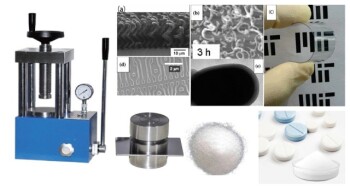
Choosing the Right Lab Press: A Comprehensive Guide
2 years agoWhen choosing a lab press, it is important to consider the load or force that will be applied to the sample. This will ensure that the press is capable of providing the necessary pressure for your specific application.
Learn More

Isostatic Presses for Aerospace Applications
2 years agoIsostatic pressing is a manufacturing process that uses pressure to create uniform parts with consistent density and strength. The process involves placing a material in a flexible container, which is then pressurized from all sides to create a uniform shape.
Learn More

Understanding Electrolytic Cells and Their Role in Copper Purification and Electroplating
2 years agoElectrolytic cells play a crucial role in various industrial processes, including copper purification and electroplating. These cells utilize an external power source to drive chemical reactions, resulting in the decomposition of substances. Through the process of electrolysis, an electric current is passed through a liquid or solution containing ions, causing them to break down.
Learn More

Understanding Laboratory Press and its Functionality in Rubber Industry
2 years agoIn the rubber industry, laboratory presses play a crucial role in the manufacturing process. These presses are used for various purposes, such as rubber vulcanization and testing. Understanding how laboratory presses function is essential for ensuring efficient production and maintaining product quality. In this blog post, we will explore the functionality of laboratory presses in the rubber industry, including their role in the vulcanization process.
Learn More
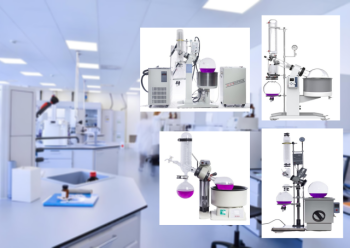
How to Get the Best Deal on a Rotavapor for Your Lab
2 years agoA Rotavapor is an essential laboratory equipment that is widely used in various fields such as chemistry, biology, and pharmaceuticals.
Learn More
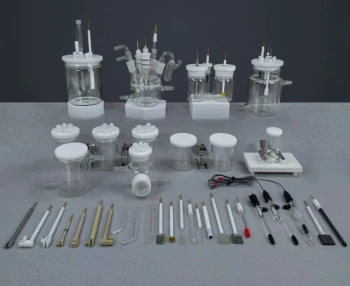
Understanding Electrolytic Cells: Conversion of Energy and Applications
2 years agoElectrochemical cell An electrochemical cell is a device capable of either generating electrical energy from chemical reactions or facilitating chemical reactions through the introduction of electrical energy.
Learn More
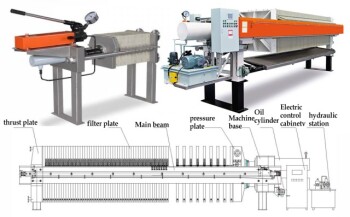
Comparative Analysis of Laboratory Filter Presses and Industrial-Scale Filter Presses
2 years agoLaboratory filter presses and industrial-scale filter presses are both essential tools used in various industries. While laboratory filter presses are designed for smaller-scale applications, industrial-scale filter presses are built to handle larger volumes.
Learn More
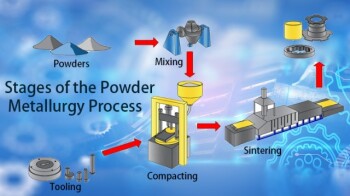
Isostatic Presses vs Other Powder Compaction Methods
2 years agoPowder compaction is a process used to form solid objects from powder. The process involves compressing the powder into a die, where it is subjected to high pressure to form a solid object.
Learn More